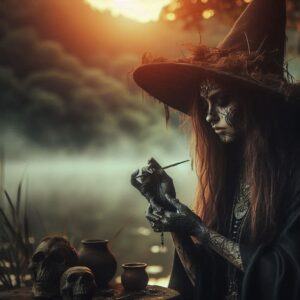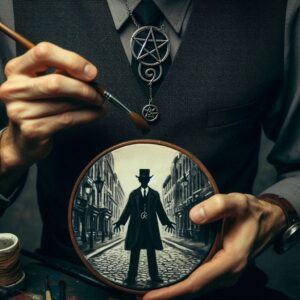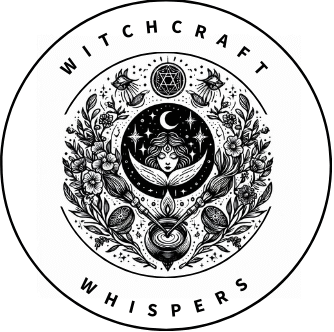Stories and ideas about witches have fascinated people for hundreds of years. Some of the things people believe about witches come straight out of old stories, but a lot of it isn’t based in reality at all. If you’ve ever wondered where myths about witches started or which ones just don’t hold up, I’ve dug into some of the most common myths and what’s actually true about them.

When Did People Begin To Think That Witches Were Real?
Belief in witches goes back way further than the stories we hear around Halloween. People in ancient times already believed some people had supernatural powers. In Europe, witch trials and big witch hunts really started to take off between the 1400s and the 1700s. During those years, lots of people, especially women, were accused of being witches. Some folks thought witches cursed their neighbors or made deals with evil forces. These fears led to all sorts of harsh punishments, such as public shaming or even worse outcomes.
History shows that the panic spread quickly when bad things happened, like when crops failed, animals got sick, or strange weather popped up. Without scientific explanations, blaming witches seemed like a possible answer, and communities latched onto this idea. The most well-known witch trials, like those in Salem, happened in the 1600s, but the belief that witches could be causing real trouble started long before that era. Even after the mass hysteria calmed down, stories and warnings about witches continued to circulate.
Where Did the Myth of Witches Come From?
The idea of witches didn’t just show up one day; it developed slowly in lots of places. Many myths grew from ancient pagan traditions and local beliefs. In these customs, people made use of herbs for healing, celebrated nature, and carried out seasonal rituals passed down through generations. Outsiders who didn’t understand or trust these customs often accused the practitioners of doing something forbidden, and rumors grew from there.
As Christianity continued spreading across Europe, religious leaders sometimes labeled familiar folk practices as evil or connected to dark forces. People who didn’t fit in with new religious expectations, such as healers, midwives, or those who lived on the edge of society, were easy targets. Stories about witches were often passed around to teach a lesson or scare folks into following the rules. These stories became more dramatic and frightening with every telling. Books like the “Malleus Maleficarum” (published in 1487) made everything worse by acting as a so-called guide for finding and dealing with witches, spreading wild and damaging ideas that people believed for centuries. Even after science explained more about the world, echoes of these ideas stuck around, shaping how people talked about witches for generations to come.
Where Did the Image of a Witch Come From?
When you picture a witch, maybe with a pointy hat, broomstick, and black cat, those images didn’t just appear out of nowhere. Artists and storytellers developed this look over many years. The tall, pointed hat started as a normal medieval head covering, but it eventually transformed into something mysterious and magical. The broomstick legend came from old stories involving ordinary household tools, but it soon became a symbol that witches could fly or break away from ordinary society.
Black cats became linked with witches because, in some old beliefs, cats were seen as magical creatures or companions to people doing rituals. Over the years, books, plays, and later movies, took hold of these symbols and built the witchy image we know today. Just check out vintage Halloween decorations or illustrations from the last few centuries and you’ll see how these ideas kept growing and spreading. The witch’s look is really a mix of folklore, religion, superstition, and the work of lots of creative artists.
Common Myths About Witches
I hear people mention the same misunderstandings about witches all the time. Here are the ones that come up the most, along with what’s actually true:
- Myth 1: Witches worship the devil.
The belief that all witches make deals with evil forces is one of the oldest myths out there. Historically, people accused of witchcraft often followed folk healing traditions or older religious practices, but that wasn’t the same as worshipping evil. In fact, most real-life traditions labeled as “witchcraft” had nothing to do with the devil at all. Modern witchcraft ways like Wicca are totally different spiritual paths, and they’re not about harming anyone or focusing on dark powers. - Myth 2: Only women can be witches.
Movies and books often highlight women as witches, but men have been accused of and practiced witchcraft as well. In cultures worldwide, male practitioners have been called warlocks, wizards, or other names. During the big witch hunts in places like Europe, plenty of men were accused too, even though women made up the majority. Even today, people of all genders follow witchcraft-based traditions. - Myth 3: Witches cast harmful spells just for fun.
The idea that witches scheme to curse others is mostly fiction. Historic witch trials featured lots of wild accusations between neighbors, but most accused folks were just ordinary community members. Today, many who put witchcraft to use focus on self-growth, connecting with nature, and supporting others. The truth is much more about positive change and less about hexes or mischief. - Myth 4: Witches always have warts, green skin, or look scary.
This belief is a pure product of cartoons and movies. In real life, witches—past and present—look the same as anybody else. The green skin and warts come straight from a desire to make witches appear spooky for children’s tales and Halloween costumes. - Myth 5: Witches fly on broomsticks.
This idea comes from a combo of old legends and a bit of creative storytelling. In some old European stories, flying represented magical freedom, and household objects like a broomstick just made sense to add into folktales. But no one was accused of actually flying on a broom; it’s more of a symbol than something you’d spot in historical documents. The broom just captured people’s imaginations.
Things to Know if You’re Curious About Witchcraft
If you’ve thought about witchcraft beyond the spooky stories, here’s what I’ve learned (and wish more people understood):
- Witchcraft isn’t one-size-fits-all. There are tons of traditions, from Wicca to folk magic, kitchen witchery to ceremonial magic. Each tradition has its own approach and beliefs. There’s no main rulebook—even if movies act like all witches are the same.
- It’s not about causing harm. Most folks who practice today follow personal guidelines about only doing positive work to help others. Popular practices include meditation, setting intentions, working with herbs, and strengthening the connection with nature.
- You don’t need special “powers.” Although old legends suggest witches have supernatural talents, most modern witchcraft is about focusing your mind, being aware, and building self-confidence and purpose in life.
Lots of newcomers think witchcraft is all ancient chants or secret ceremonies, but for most, it’s something you can bring into daily life by lighting a candle with an intention or keeping a journal of dreams and gratitude. Many people who dig into these practices say they find comfort, meaning, and a greater appreciation for the world around them. Witchcraft communities encourage learning, respecting traditions, and finding what feels meaningful for you.

Can a Man Practice Witchcraft?
This question pops up quite a bit, and the answer is definitely yes. Witchcraft doesn’t belong to just one gender. All sorts of people, all across the world and throughout history, have practiced magic or followed similar spiritual traditions. Some cultures have used words like “wizard,” “sorcerer,” or “magician” for men, but those titles don’t set them apart from women practitioners. In today’s witchcraft communities, what really matters is your practice and intention, not your gender. Whether you’re interested in rituals, herbalism, or exploring your own spiritual path, witchcraft is open to anyone willing to learn and respect the traditions.
Frequently Asked Questions About Witches and Witchcraft
Interest in the real story behind witches and witchcraft keeps popping up. Here are a few questions that come up regularly if you’re just starting to check out the subject:
Question: Where did the word “witch” come from?
Answer: The word “witch” comes from the Old English “wicce” (for a woman) or “wicca” (for a man), describing someone who practiced magic or sorcery. Over time, the word shifted in meaning depending on people’s attitudes about magic in their communities.
Question: Why were witches seen as a threat?
Answer: During times of uncertainty or crisis, blaming “witches” was an easy way for a community to try to explain strange or troubling events. Social stress, religious changes, and fear of what people didn’t understand all helped to fuel suspicions, which sometimes resulted in accusations.
Question: Do people still believe in witches today?
Answer: Some folks still do, but most modern views focus on witchcraft as a collection of spiritual practices or personal traditions. In certain cultures, belief in supernatural magic and the idea of witches remains strong, impacting the way people live or interact in those areas.
What to Take Away About Witches
Witches have played a big role in myths and stories for centuries, but the truth is, their story is a blend of misunderstood customs, fear, and plenty of creative storytelling. The idea of the “witch” grew out of old folk practices, anxiety about outsiders, and the unknown, not just sinister magical powers. Today, real-life witchcraft centers on connection, giving yourself a boost, and caring for the natural world, not on flying, curses, or scaring people. If you’re interested, learning the facts opens up a much more fascinating world than any spooky legend ever could.
